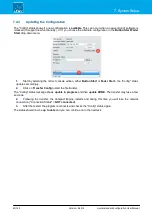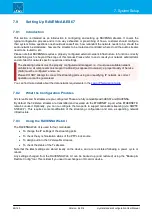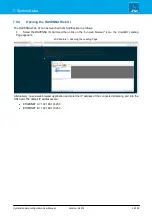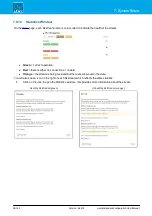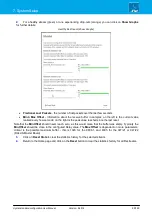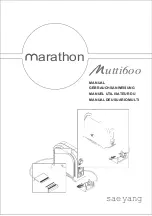
crystal standard configuration User Manual
Version: 6.4.0/4
48/149
7. System Setup
7.9
Setting Up RAVENNA/AES67
7.9.1
Introduction
This section is intended as an introduction to configuring and setting up RAVENNA streams. It covers the
typical configuration process and is in no way exhaustive or prescribing of how a customer should configure
their system. Some questions one should ask oneself are: how redundant the network needs to be; should the
audio network be standalone; how are the streams to be routed and controlled; where do all the audio streams
need to be routed to; etc.
Please note that RAVENNA requires a properly configured external network infrastructure to function correctly
and defining such is beyond the scope of this manual. Please refer to and consult your network administrator
and architect for network specific questions and settings.
The streaming network
must
be properly configured and managed. i.e. it must use a suitable network
architecture; all components must support multicast (as opposed to unicast); a proper Quality of Service
(QoS) must be configured; and so on.
Please
DO NOT
attempt to connect the streaming ports using an unqualifying IP network, as correct
operation cannot be guaranteed.
You can find more details about the data network requirements in the
7.9.2
What the Configuration Provides
32 stereo Rx and Tx streams are pre-configured. These are fully compatible with AES67 and RAVENNA.
By default, the 32 stereo streams are transmitted and received via the ETHERNET A port, while ETHERNET B
remains unused. Optionally, you can re-configure the two ports to support redundant streaming (via SMPTE
ST2022-7). This requires some modification of the streaming configuration and also a supporting network
infrastructure.
7.9.3
Using the RAVENNA Web UI
The RAVENNA Web UI is used for four main tasks:
·
To change the IP settings of the streaming ports.
·
To check the synchronization status of the PTP clock source.
·
To assign audio to the 32 stereo Rx streams.
·
To check the status of the Tx streams.
Note that the latest settings are stored locally on the device, and are re-instated following a power cycle or
reboot.
Any settings changed from the RAVENNA Web UI can be backed up (and restored) using the "Backup &
Restore Config" tool. This is ideal if you need to exchange an IO card or device.







